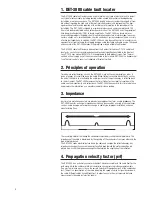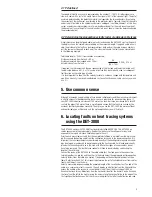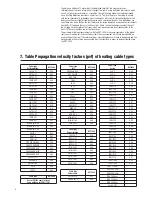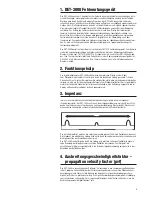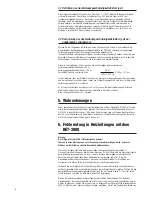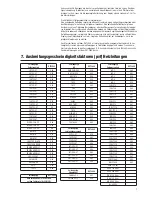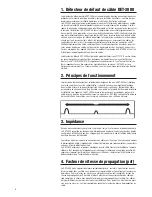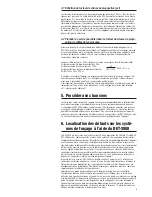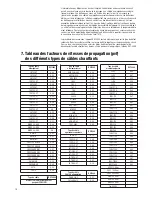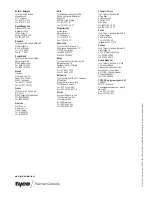
3
4.1 Pvf defined:
The speed of light in a vacuum is represented by the number 1 (100%). All other signals are
slower. A cable with a pvf of .85 would transmit a signal at 85% of the speed of light. The pvf of
a cable is determined by the dielectric material that separates the two conductors. By entering
the correct pvf, the instrument is calibrated to the particular cable. Typically, the pvf of the cable
under test will be listed in the cable manufacturer's catalogue. (see table, chapter 7. of this doc-
ument or point your internet browser at: www.tycothermal.com for the most recent version of
this document. In case the pvf of the cable under test is not known it must be determined using
the procedure below.
4.2 Determining the propagation velocity factor of unknown cable types
Simply measure a length of good cable (no faults) and change the DET-3000´s pvf setting until
the display shows the same distance reading as the measured length. If no good cable is avail-
able, the distance to the fault can be measured from both ends of the cable using an arbitrary
pvf (the same must be used at each end). The actual distance to the fault can be calculated as
in the following example:
Total cable length = 250 m (from records or measured)
Distance measured from first end = 90 m
Distance measured from second end = 140 m
Actual distance from first end =
If required, the instrument can then be reconnected at the first end and the pvf adjusted until
the indicated distance is 97.8 m. This value of pvf can then be noted and used for subsequent
fault location on the same type of cable.
It is also important to know that the velocity factor of a cable can change with temperature and
age. It can also vary from one manufacturing run to another. Even new cable can vary as much
as ± 3%.
5. Use common sense
Although a thorough understanding of time domain reflectometry and the measuring instrument
is vital to successful troubleshooting, there is never a substitute for good common sense. If
your DET-3000 indicates a distance of 150 meter to a fault, but there is evidence that a forklift
ran into the pipe at 162 meter, there is a pretty good chance that the fault was caused by the
accident. Familiarity develops versatility. The more you use the DET-3000, the more confident
and comfortable you will become, and the more applications you will find for it.
6. Locating faults on heat tracing systems
using the DET-3000
The DET-3000 comes with 100 OHM test leads preinstalled NEVER USE THE DET-3000 on
cables connected to the mains supply. Besides the live hazard the voltages at mains level
exposed to the inputs will cause severe damage to the unit.
Prior to each measurement verify that the complete installation is isolated from the mains sup-
ply. Disconnect the heating cable from the connection terminals at the power connection. It is
important that all measurements are performed directly at the heating cable to avoid mis-read-
ings due to power cable used to bring the power to the heating cable. Cold leads permanently
joined with the heating cable, as is the case with MI or other types of series heaters, do not
have to be removed. The final distance readout will have to be adjusted by subtracting the
length of the cold lead.
Connect the leads of the DET-3000 to the cable under test. One lead goes to the conductors,
twisted together in a pig tail, and the other to the braid. Select the appropriate pvf (propagation
velocity factor) from the table (see section 7) depending on the heating cable under test (see
table). Refer to section 4.2 of this manual to determine the pvf of unlisted cables or from cables
from which the pvf is not known.
Select a measuring range exceeding the expected length of the circuit under test. The end of the
cable, or a severe cable fault, is seen on the unit display as a deflection from the horizontal line
across the middle of the screen (in case of doubt start off from the Max range of 3000 m).
Examine the trace for any deflections from the horizontal line after the transmit pulse. Examine
the trace from the left to the right, moving the cursor along the horizontal line to the edge of the
first significant deflection seen. Set the cursor at one pixel to the left of the deflection and read
90
(
90
+
140
)
X 250 97.8 m
_
~


